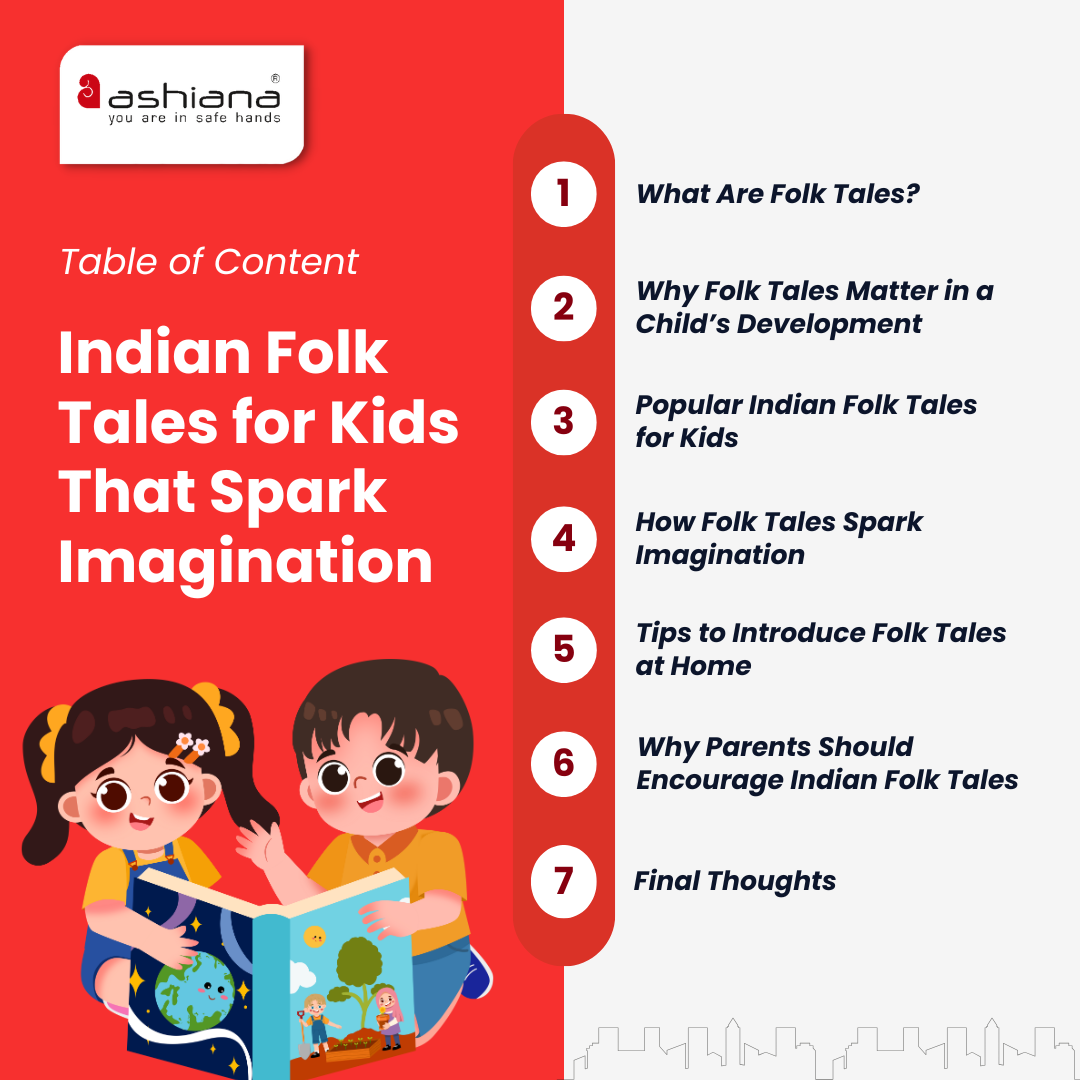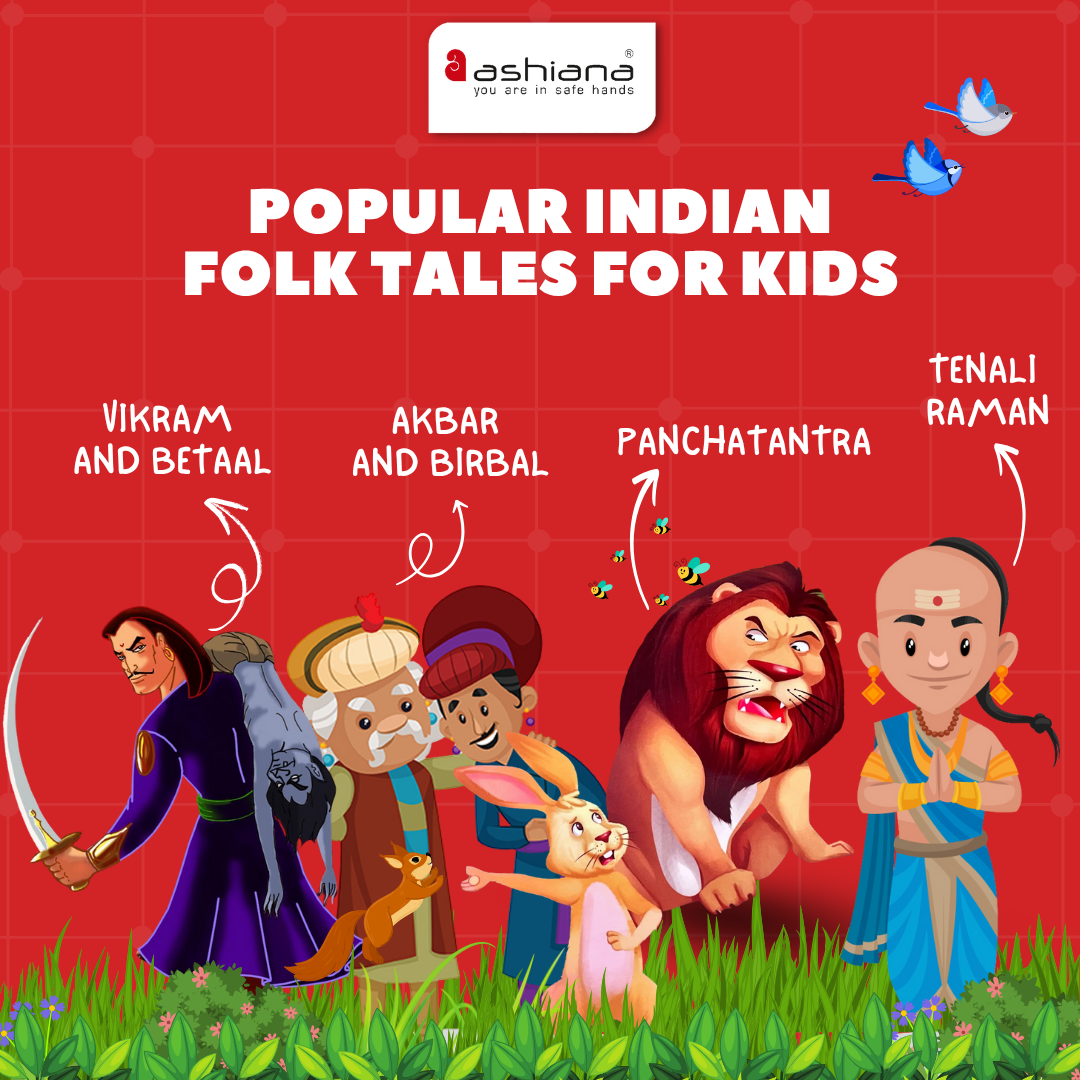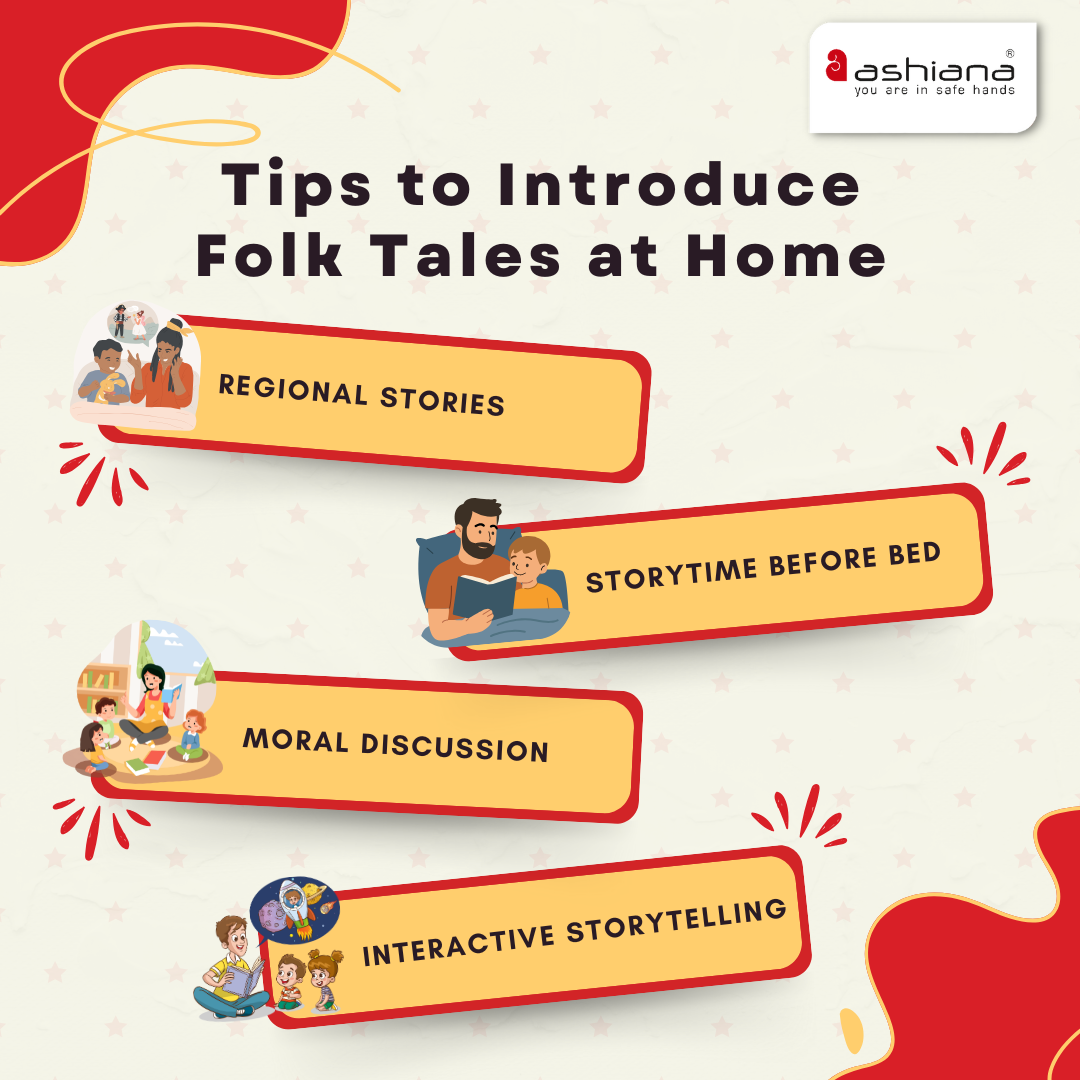

 Also read: Top 15 Best Panchatantra Stories for Kids
Also read: Top 15 Best Panchatantra Stories for Kids
 Also read: The Ultimate List: 10 Must-Read Indian Bedtime Stories for Kids
Also read: The Ultimate List: 10 Must-Read Indian Bedtime Stories for Kids
Indian folk tales are perfect for children aged 4 to 12. Shorter, simpler stories work well for younger kids, while older children enjoy tales with more complex characters and morals.
Use expressive voice modulation, props, and interactive activities like drawing or acting out the story to keep them engaged.
Absolutely! Folk tales continue to teach timeless values and stimulate creativity, making them just as relevant in today’s world as they were generations ago.
Ashiana, Ashiana Housing build homes. Homes surrounded by vast green spaces and fresh breeze. Homes cocooned in secured gated complexes. Homes where futures are forged and there are opportunities to grow. And Homes in environments brimming with healthy activity, trust and respect. At heart, we build communities with care.
Other posts by Ashiana
Join 1000+ of fellow readers. Get expert real estate knowledge straight to your inbox absolutely free. Just enter your email address below.